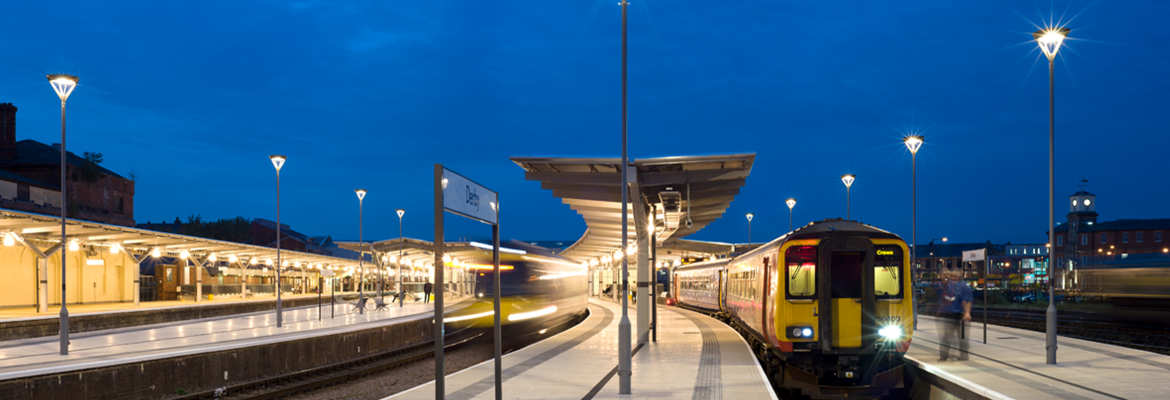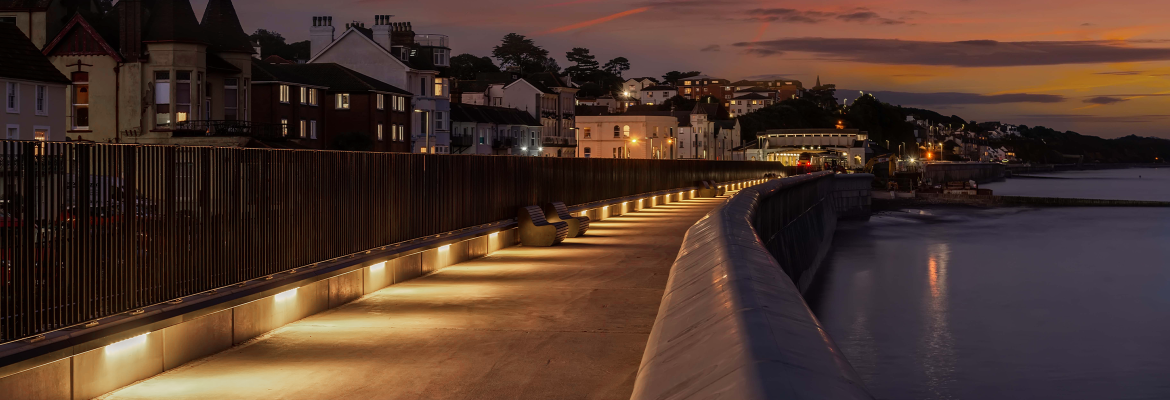Putting lighting in the spotlight for the rail industry
August 2023
August 2023
OPINION
We were recently invited by Rail Director magazine to discuss the importance of good lighting in the rail sector. Here, our Business Unit Manager for Rail and Garda, David Woodcock, explains how lighting can help save energy, improve safety, and enhance the passenger experience. The original interview from their August 2023 issue can be found here.
Intelligent lighting solutions and smart controls can help enhance the passenger experience, improve safety and lower operational costs, helping to ensure railway stations operate as efficiently as possible.
A shining example of its capabilities for railways comes from DW Windsor, which for 45 years has been delivering high-quality lighting equipment engineered to offer outstanding quality and performance through continued innovation and precision manufacturing.
“There are a number of ways that lighting technologies can be used to improve the safety of railway stations, level crossings and other areas of the rail network,” said David Woodcock, Business Unit Manager – Rail & Garda. “We’re here to support customers with their lighting challenges, whether that’s hitting sustainability and net-zero targets, reducing energy consumption or ensuring the right light is used in the right places.”
|
|
|
David Woodcock, Rail Business Unit Manager Originally trained as an electrical engineer, David has over 25 years of experience within the lighting industry and has previously worked at DW Windsor in a number of key roles. As Rail Business Unit Manager, he helps to provide lighting and control-based solutions within the transportation sector. |
DW Windsor is an award-winning designer and manufacturer of exterior lighting and smart Internet of Things (IoT) technology solutions for the global specification market, and one of the largest outdoor lighting specialists in the UK.
It has a proven track record in the rail sector in delivering lighting upgrades as well as ground-breaking innovations and pilot trials for the likes of Network Rail, Great Western Railways, Arriva, Northern and the Department for Transport, offering a variety of products and lighting systems used everywhere from the car park to the platform.
“Through sophisticated designs, controls and technology, DW Windsor can deliver lighting schemes that are innovative, positively affect the passenger experience and help meet the challenges of operating a modern railway,” said David, who originally trained as an electrical engineer and has more than 25 years of experience within the lighting industry.

“We understand the importance of lighting for the safety, security, comfort and experience of passengers and staff and have the expertise to offer best practice technical and specification guidance throughout, working in close collaboration with project teams and the rail asset operators.”
Simon Harrison-Wallace, Marketing Manager, added: “DW Windsor has worked extensively within the rail industry for a number of years and, recognising the need to provide intelligent lighting solutions tailored specifically to rail applications, formed a dedicated business unit under David’s leadership to better support clients working in this sector.
“When it comes to light, one size doesn’t fit all, which is why we have a range of solutions that can be used in and around station areas. We are a company of innovators which has been pushing on the lighting control’s side, particularly with smart controls, to help lower energy usage and cut carbon emissions.”
“We’re also pioneers of handrail lighting, having launched our Garda range over a decade ago. This includes a patented Anti-Climb version designed for safety-critical applications such as bridges and overpasses. We’ve also recently launched a glass-reinforced plastic (GRP) bollard, so we have been leading the charge in lighting safety for several years.”

Among recent successes has been the company’s involvement in the Dawlish Sea Wall, in which it supported Arup with the illumination of a 330m stretch of the elevated sea-front promenade to improve visibility for people while at the same time avoiding any glare for train drivers travelling along the adjacent track.
DW Windsor’s Special Projects team developed a bespoke solution using a modified version of its Anti-Climb profile designed to withstand the harsh coastal environment. In total, 110 custom LED lighting modules were installed along the walkway, set at an angle to wash across the pathway rather than illuminate the space above it.
David said: “At a recent parliamentary hearing, the project was described by Afron Davies of Arup as a ‘gold standard’ lighting scheme, which creates a lit environment that is welcoming and safe for people while also protecting train drivers. He added that the lighting also doesn’t spill into the sea, minimising any impact on wildlife.”
What makes DW Windsor particularly special is its passion and ability to use light to positively impact behaviours and keep those around the railways safe. There are a number of ways that lighting technologies can be used to improve safety around railways, with the correct lighting scheme delivering uniform levels of illumination, meaning that all objects and surfaces, including signage, platform edges and steps, as well as other people, are clearly visible.
This must be achieved while preventing glare that may affect train drivers’ vision and done sustainably – keeping lights on all the time when they aren’t needed doesn’t make financial sense, and also isn’t good for wildlife or light pollution.
Simon said: “Light can help keep people safe and influence their behaviour. Looking at wayfinding, we can use light to nudge people and impact their response. For example, if a station is overcrowded, we can use light to dynamically change passenger flow.

“To really fulfil the potential of lighting in railways, you need pioneers on the client end who want to do this, and then you need innovators to actually look at the problem and try to identify a solution. The latter is where we fit in.”
DW Windsor is also driven by sustainability, with the correct approach to lighting able to help the industry reduce its carbon footprint, minimise waste and the environmental impact of materials used, as well as protecting wildlife and habitats.

David said: “A simple step that can make a significant difference is upgrading all existing lighting, both trackside and throughout stations, to energy-efficient LED products. This can be enhanced further by using lighting controls such as our award-winning Cellular Node to minimise wasted energy during off-peak times. Unlike traditional lighting control systems that require specialised networks to be built, our Cellular Node works straight out of the box, just like a mobile phone. This makes it a cost-effective solution for deployments of any size, ideal for rail applications.
“The concept of circularity in lighting has received increased attention, and it is something we take very seriously with the manufacturing of our products. As part of that, products must be designed to allow for simple upgrades. Our lanterns enable new technology to be implemented without the waste and cost of replacing the whole luminaire, increasing the longevity of the entire scheme.
“Furthermore, when considering the end of the product’s life, it is important to ensure the design and materials of a product will allow simple recycling; for example, aluminium and copper, the primary materials we use for our products, are easy to recover due to the use of mechanical fixings and can be easily recycled.”
Simon added: “We need to make sure that decisions on lighting are being made for the right reasons and we’re not impacting on wildlife where possible. There is strong evidence to suggest warmer colour temperatures are less impactful on nocturnal life. At DW Windsor, we advocate for illuminating with warmer colour temperatures where possible. Not only is this better for flora and fauna, but it also helps to tackle light pollution and protect dark skies.
David concluded: “Overall, the future looks very bright for DW Windsor with some high-profile rail customers and projects, and trials which we know will make the railways a safer, more sustainable place. It is all about putting lighting in the spotlight for the rail industry, something we have a proven track record in achieving.”